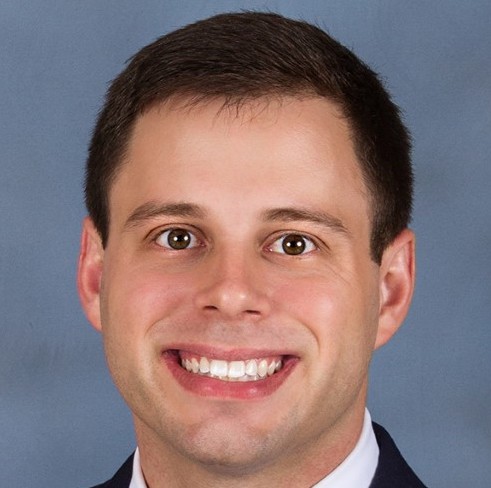A new enhanced recovery protocol for patients undergoing lung resection surgery performed by faculty members in the University of Colorado Department of Surgery is resulting in patients going home sooner, experiencing less postoperative pain and complications, and taking fewer opioid drugs to manage their pain.
“Patients having surgery are prone to complications after surgery, and over the past decade or so, there has been a significant effort nationally and internationally to identify and streamline patient processes of care to try and minimize complications,” says Robert Meguid, MD, MPH, a professor of cardiothoracic surgery in the CU School of Medicine who designed the protocol with general surgery research resident Adam Dyas, MD.
“These are efforts to develop streamlined protocols that apply to patients from when we first meet them in clinic through to their surgical encounter, all the way to their recovery,” Meguid says. “We are applying techniques that have been shown to decrease postoperative complications, such as wound infections, shorten length of stay, and improve quality-of-life outcomes and recovery from surgery.”
Recovery from resection
Designed specifically for patients undergoing lung resection — removal of a whole lung, a lobe of the lung, or a segment of the lung due to cancer or lung disease — the new enhanced recovery after surgery (ERAS) protocol includes an immunonutrition supplement patients are asked to drink prior to surgery, earlier removal of chest tubes, and getting patients up and walking as soon after their surgery as possible.
The protocol also includes specific guidance on urinary catheters — removing them earlier, or not using them at all for surgeries that last less than four hours — to reduce the possibility of urinary tract infections.
Collaborative effort
Meguid and Dyas worked with providers and clinicians across the UCHealth system — the clinical partner of the CU School of Medicine — to create and refine the protocol. Thoracic surgery involves seven surgeons across six hospitals — including facilities in Highlands Ranch, Fort Collins, and Colorado Springs — and getting their input and buy-in was important to a successful ERAS program, Meguid says.
“We started with a series of stakeholder meetings that involved the surgeons, the surgical advanced practice provider team, some of the surgical residents, the nurses who take care of these patients, advanced practice providers, the clinic staff, physical therapists, occupational therapists, and respiratory therapists, and extrapolated this to all the key stakeholders,” Meguid says. “We used their input to optimize the protocol.”
Dyas and Meguid also reviewed the most up-to-date literature on thoracic surgery ERAS, including recommendations from the European Society of Thoracic Surgery, before implementing the protocol in May 2021.
“Going from having it on paper to actually having it implemented within our system was probably the biggest, most important thing to do,” Dyas says. “You can have a perfect protocol, but if no one uses it, it's not going to be as valuable or change outcomes as it will if the adherence is better. Our continued focus on the protocol has ensured that we are meeting those metrics and benchmarks on a month-to-month basis, and that's been incredibly helpful for pushing implementation forward and making sure it hasn't fallen off over time.”
Seeing results
Sixteen months after introducing the ERAS protocol for lung surgery, the hospital team is already seeing a decreased length of chest tube use, resulting in a decreased length of stay; an increased frequency of patients walking after surgery; and a downward trend in the use of narcotic pain medication. Meguid, Dyas, and others from the CU School of Medicine and UCHealth published the results in August in the Journal of Thoracic Disease.
The team’s goal now is to review patient data monthly to be sure the protocol is being followed effectively, and adjusting the guidelines as necessary, using real-world experience to guide the way.
“We have quarterly meetings that are systemwide, where our colleagues from the other hospitals present their outcomes and we say, ‘OK, you're hitting this target way better than we are; we're hitting this target better than you. What are you doing differently? How can we change to make ours better?‘” Meguid says. “It's been a great opportunity to engage in collaborative work to improve patient care across the health system, not just at our own individual hospitals.”





.png)
